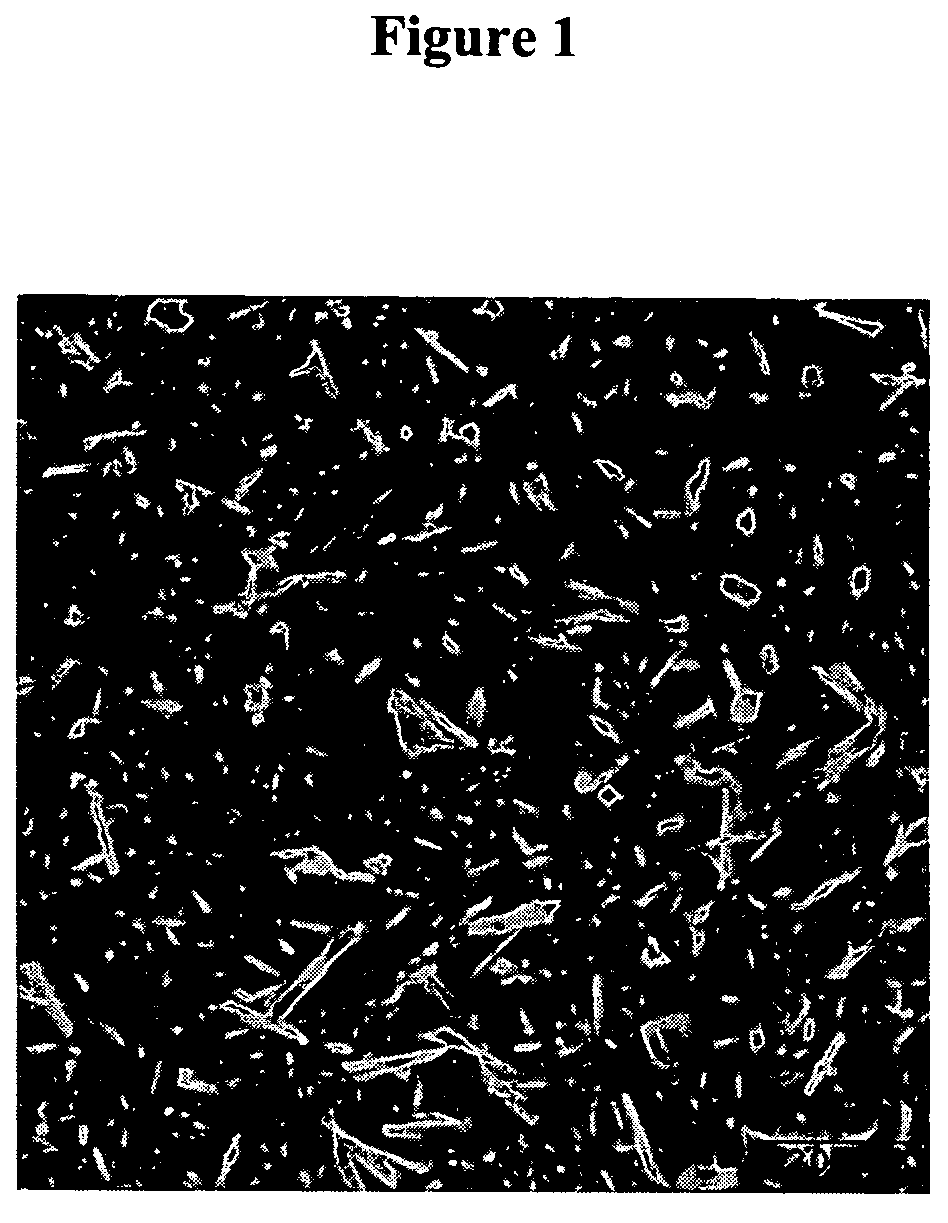Tough cordierite glass-ceramics
a glass-ceramic compound and cordierite technology, applied in the field of toughened glass-ceramic compound, can solve the problems of void creation and pressing, glassy materials can thermally deform well below their theoretical melting point, and only have average fracture toughness, so as to achieve good fracture toughness, high young's modulus, and high hardness
- Summary
- Abstract
- Description
- Claims
- Application Information
AI Technical Summary
Benefits of technology
Problems solved by technology
Method used
Image
Examples
example 1
[0022]A mixture was made consisting essentially of 45 wt. % silica, 28 wt. % alumina, 14 wt. % magnesia, 2 wt. % calicia and 10 wt. % titania. The mixture was heated to form a clear, amber-colored glass and cast into a shape. The shape was first annealed for 2 hours at 800° C. The shape was further annealed for 10 hours at 1200° C. until a crystallinity of 95 vol. % was achieved. The resultant glass-ceramic had a CTE of 30×10−7 / ° C. and a fracture toughness of 3.8 MPa·m0.5. Prior art cordierite glass-ceramic have a CTE of 55×10−7 / ° C. and a fracture toughness of 2.2 MPa·m0.5. The cordierite glass-ceramic of the present invention had a nearly 50% reduction in CTE while improving fracture toughness by over 70%.
[0023]The following Table 1 gives further examples of representative compositions according to the invention. Compositional information is in weight percent and is, as batched, unless otherwise indicated.
[0024]
TABLE 1ABCDE*FGH*IJKSiO242.643.945.446.745.043.542.744.544.343.645.4A...
PUM
| Property | Measurement | Unit |
|---|---|---|
| fracture toughness | aaaaa | aaaaa |
| fracture toughness | aaaaa | aaaaa |
| fracture toughness | aaaaa | aaaaa |
Abstract
Description
Claims
Application Information
 Login to View More
Login to View More - R&D
- Intellectual Property
- Life Sciences
- Materials
- Tech Scout
- Unparalleled Data Quality
- Higher Quality Content
- 60% Fewer Hallucinations
Browse by: Latest US Patents, China's latest patents, Technical Efficacy Thesaurus, Application Domain, Technology Topic, Popular Technical Reports.
© 2025 PatSnap. All rights reserved.Legal|Privacy policy|Modern Slavery Act Transparency Statement|Sitemap|About US| Contact US: help@patsnap.com

